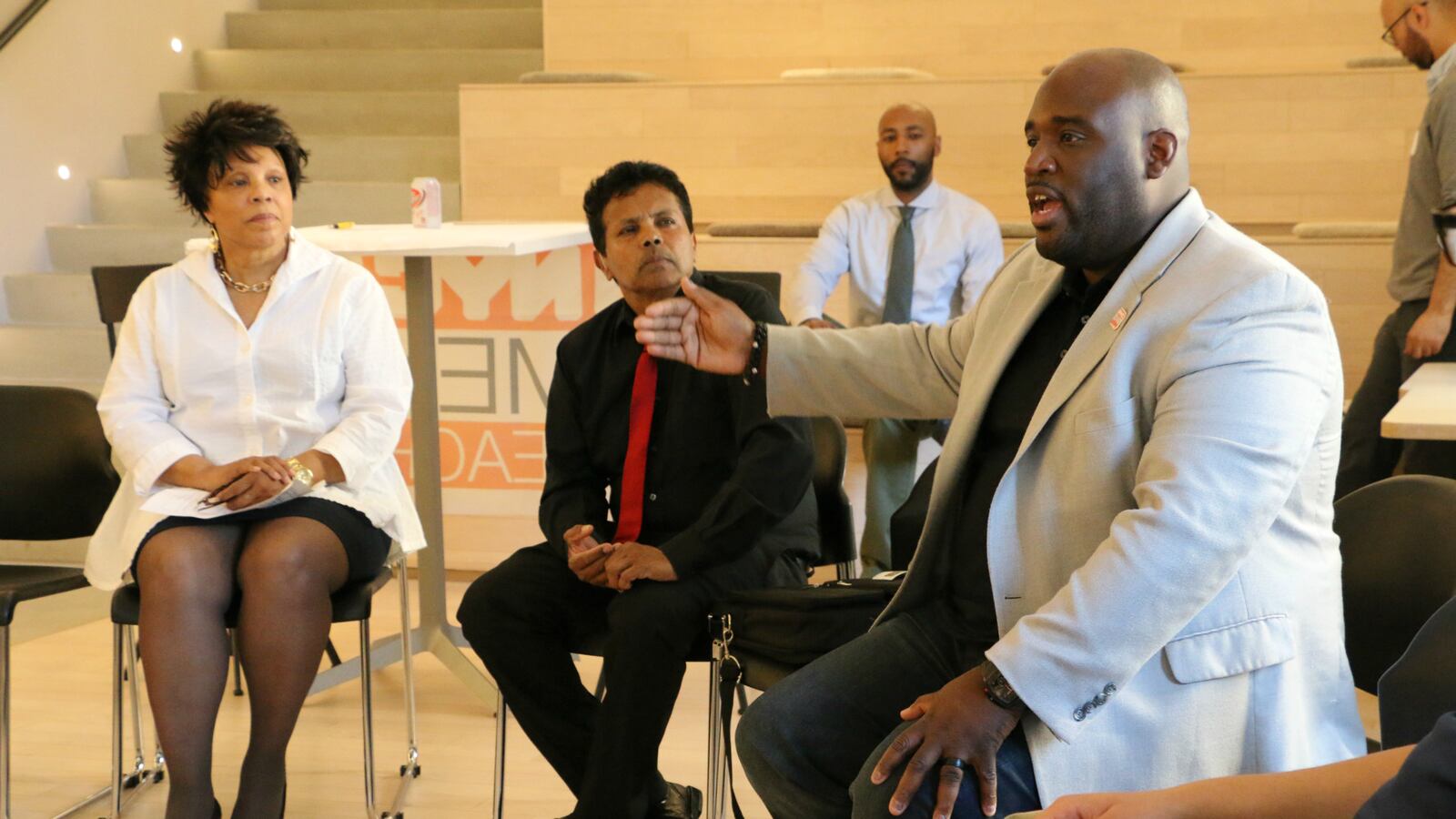The number of male teachers of color entering New York City classrooms rose this school year, but there is still a long way to go before the teaching force matches the demographics of the city’s students.
The Department of Education hired 600 men of color to teach this school year — up by about 100 over the previous year. Thanks in part to efforts like NYC Men Teach, a recruitment and training initiative spearheaded by Mayor Bill de Blasio, roughly 10 percent of all teachers hired this year were men who are black, Hispanic or Asian. That’s an increase of two percentage points — or 25 percent — over 2015.
A majority of New York City students — about 85 percent — are nonwhite. Of that, more than 40 percent are male. Research has shown that teachers of color often have higher expectations of nonwhite students and help serve as role models.
A Department of Education official said another 200 candidates are expected to be brought into classrooms next year through NYC Men Teach — a $16 million initiative. It’s unclear whether the city will reach its goal of hiring 1,000 men of color by 2018.
“We are making steady progress,” Will Mantell, a DOE spokesman, wrote in an email.
The department is also working on overall recruitment and retention, according to testimony at a City Council Education Committee hearing on Tuesday.
Though New York City has not experienced the crunch felt in other school districts across the country, the DOE hasn’t been immune to national teacher shortages in critical areas such as bilingual education and STEM — science, technology, engineering and math.
Amy Way, who helps oversee teacher recruitment efforts at the DOE, said recent applicant pools are “strong,” but the city has seen a decline in applicants who are recent graduates of education schools.
“That is a concern for us,” she said. “We are engaging with schools of education and other partners to really look at that longer-term pipeline and how we can build interest.”
With a retention rate of more than 93 percent year-over-year, New York City beats national averages. Still, about 35 percent of teachers leave within the first five years, Way said.
Of the more than 5,500 local teachers who left the profession last year, a majority resigned, according to the United Federation of Teachers.
“In exit interviews, these educators cited a variety of reasons, but first and foremost they found the difficult working conditions and lack of support too overwhelming,” Karen Alford, vice president of elementary education for the union, said in a prepared statement.
City Council members who are also former educators and spoke at the hearing said large class sizes are a major reason why city teachers leave. Councilman Mark Treyger, who taught at Brooklyn’s New Utrecht High School for eight years, said teachers need more time to collaborate — and that principals should be freed up from paperwork to allow them more time to provide feedback on each teacher’s performance.
Among other solutions proposed: new residency programs for teachers in training and eliminating bureaucratic hurdles in the state certification process.
Way said the city has focused on creating alternative pathways to becoming a teacher and offering financial incentives for those pursuing credentials in high-need areas.
“While we recognize there are still challenges in this area, we are on the right track,” she said.


